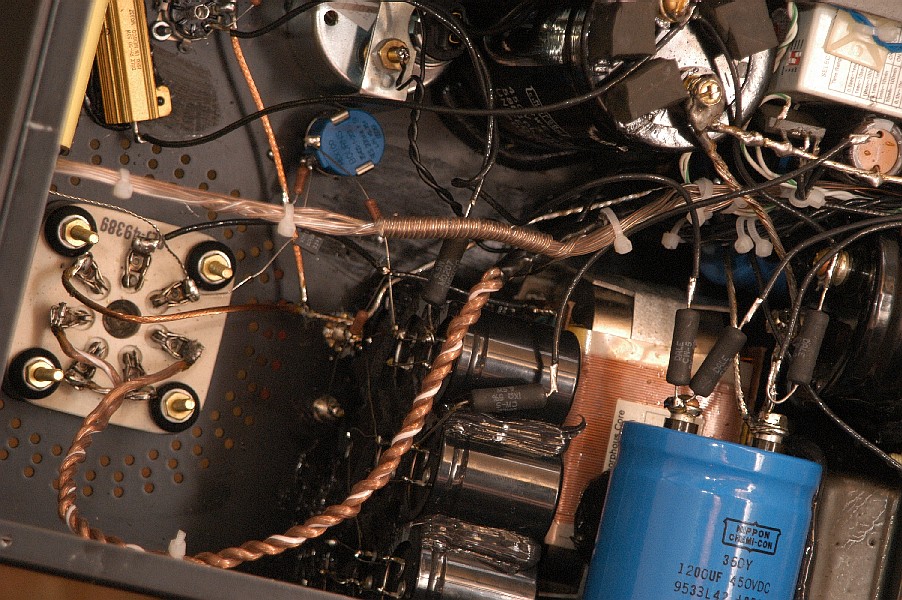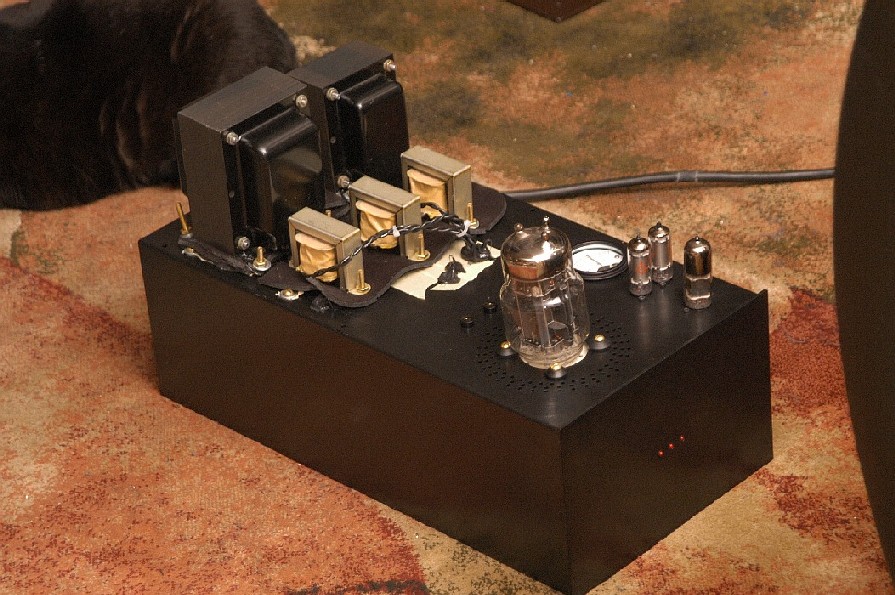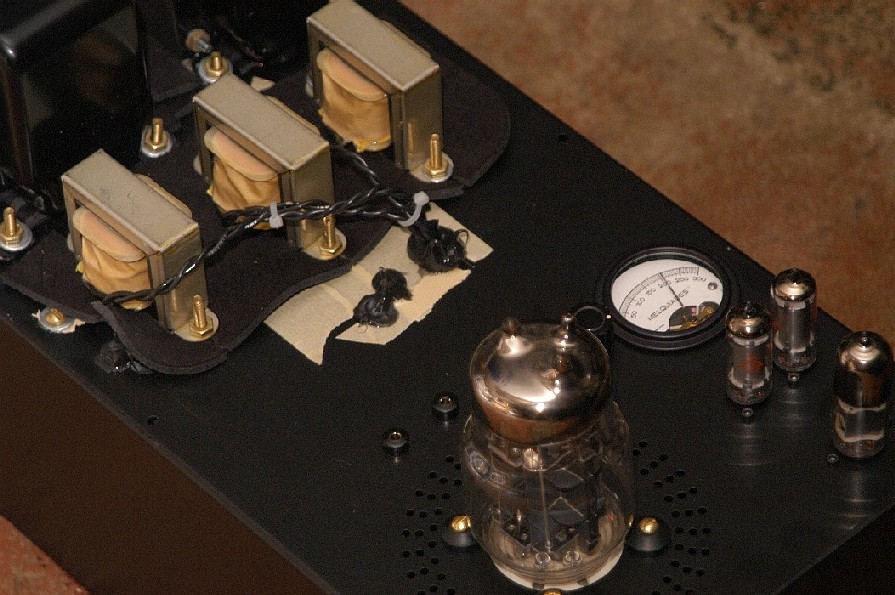|
Ok, the one channel of the Milq is up and running. The first assembly went fine, no bugs or problems – it worked fine juts after the build. All voltages, delays and heating are normal; this I would need to inspect everything again after it will work for a while. For this amp I decided to drive the 6C33C at full power at near 60W.
Preliminary I feel that this Milq has more powerful bass then the first one. I did not measure it but subjectively it is very notable. Also, it is insultingly quite. With none-shorted input it measures .4mV at the output – not bad…. The powers supplies do fine worked fine: all chokes are triple and more of the minimum inductance and looking at the scopes like they are agreeable with rectifiers output. The ripples are very low, way under 1mv. I particularly proud about the cooling: in a sealed enclosure with forced air it is possible to do some kinky things…..
Sound…. I am not exactly impressed, in fact it kind of sounds ugly. I care at this point about it as it is juts too new amp to say anything defiantly, not to mention that some things should be change to listen Sound: I run now the “dead tubes” for first and second stage (my building test tubes), I did have better good resistor for plate of the first stage, I have no input loading resistor in the amp and load the preamp and cable to the gas tubes… So, beside it is too new it also has own reasons to sound “straggly”… Oh, yes did I mention that I am driving for now the new Milq with loudspeakers of 82dB sensitively?




Anyhow, it looks like there is a light in the end of this Milq tunnel and if everything goes fine then I will close it up this weekend. This monoblock took has approximately 16 hours to bring it to the state it is. It was a nice and not abusive process. In fact, it was the only project of mine during which, I did not electrocute myself of burned my fingers. Although the project is not over….
Rgs.
Romy the Catn
"I wish I could score everything for horns." - Richard Wagner. "Our writing equipment takes part in the forming of our thoughts." - Friedrich Nietzsche
|